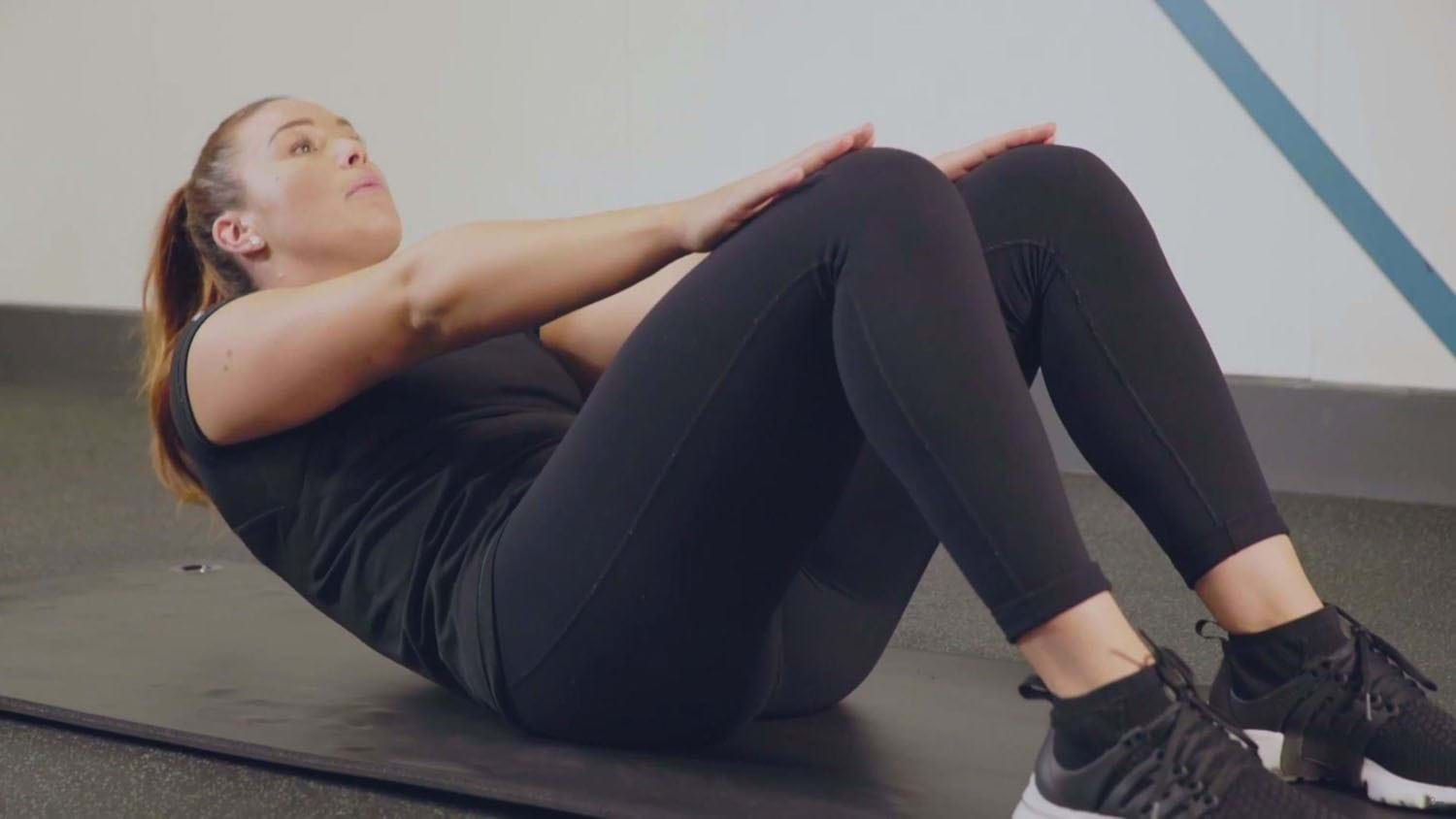Sit Ups
What is a sit up?

One of the exercises most associated with a six-pack due to working the abdominals, sit ups work the muscles that make up the abdominal wall: rectus abdominis, transverse abdominis, and the internal and external obliques, with the hip flexors also strengthened.
While sit ups are an excellent ab exercise that can be carried out virtually anywhere, to build a strong, functional core we recommend they are performed as one of several core exercises to ensure all core muscles (such as erector spinae, back, and glutes) are trained in both movement and anti-movement exercises.
If you've mastered the sit up, you can make sit ups more challenging by adding load (weighted sit ups) or incorporating pulses (pulse sit ups) to increase time under tension. We've covered both variations below.
Check out some of our other ab exercises: Russian twists, Butterfly sit ups, Reverse crunches, Planks, Toe touches
COMMONLY ASKED QUESTIONS ON SIT UPS
While sit ups work the abs, they do not help to lose fat, including belly fat. If your goal is to lose stomach fat, you will need to lose weight through a calorie deficit. However, it’s worth remembering that you cannot spot reduce fat.
Completing 100 sit ups may sound like a good challenge but it’s not an efficient way to work your abs. Instead, incorporate a variety of core and anti-core exercises into your training, and opt for weighted sit ups to make sit ups more challenging.
We wouldn’t advise doing sit ups every day as it’s important to allow enough rest for your muscles to recover between workouts. If you choose to include sit ups in your workout regime, performing four sets, 2-3 times per week will likely be beneficial for muscle growth.
A pulse sit up is a variation of the conventional sit up that challenges the core in a shorter range of motion. The shorter range of motion puts greater tension on the muscles and is likely to challenge balance and coordination more than the conventional sit up.
Pulse sit ups are a good sit up variation that can increase the challenge on the core muscles. The movement focuses on the mid-range of a conventional sit up, which is the most challenging portion of the exercise, as the tension on the muscles is maximised throughout.
Weighted sit ups are a great way to strengthen and define the abs, and are a good way to progress from conventional sit ups. Adding weight allows the sit up to be progressively overloaded, aiding muscle growth.
Weighted sit ups are not bad for your back as long as they are performed correctly. If you’re new to sit ups, it’s best to avoid weighted sit ups for now and practise the conventional sit up first. Once you’ve mastered your form and have become stronger you can progress to the weighted version!
Your core strength and the amount of load you select will determine how many weighted sit ups you can do. You should only perform as many reps as you can with good form.
Sit Up tips
While sit ups are a straightforward movement, it is important to use correct technique to avoid risking lower back injury and gain maximum benefits. Focus on tucking your tailbone under and pulling your belly button towards the spine ensures the abdominals drive the movement, not the lower back. If your back still hurts during sit ups while doing these, it may be that your core isn’t currently strong enough. If this is the case, try exercises like planks and crunches to build up strength first.
How To Do Sit Ups
Lie on your back with your glutes and back pressed to the floor and your legs bent. Position your hands so that they can lightly touch the side of your head just behind your ears.
To commence the reps, squeeze your core as you lift your body up from the ground towards your knees.
Return to the starting position by slowly lowering your upper body back to the ground.
HOW TO DO WEIGHTED SIT UPS
Lie on your back with your glutes and back pressed to the floor and your legs bent. Hold a dumbbell, keeping your arms straight throughout.
To commence the reps, squeeze your core as you lift your body up from the ground towards your knees.
Return to the starting position by slowly lowering your upper body back to the ground.
How to do Pulse sit ups
Lie on your back with your glutes and back pressed to the floor and your legs bent. Position your hands so that they can lightly touch the side of your head just behind your ears.
To commence the reps, squeeze your core as you lift your body up from the ground towards your knees.
Lower the torso towards the starting position but pulse back upwards again before the back reaches the floor. Continue to pulse for your required reps.
Once you’ve completed the reps, lower your back to the floor until you’ve reached the starting position.
If you’re not sure if any of the above exercises are suitable for you, please consult your doctor before you start it. Need guidance on how to perform the exercise? Ask a personal trainer at your gym.